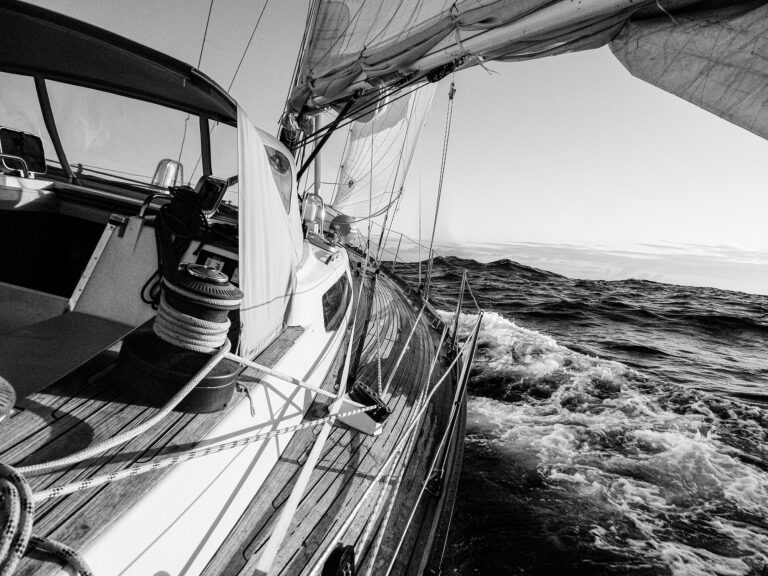Here at Cruising World–tucked away in Rhode Island, far from New Orleans–the first inkling that all hell was breaking loose in the aftermath of last August’s devastating Hurricane Katrina was an e-mail to friends some 36 hours after the storm made landfall from author and contributor Jim Carrier (“Ranger’s Refit–and the Real Rewards,” June 2003; “Lingering on the Algarve,” June 2005), who’d moved into a new home in the Lakeview section of the city just a month before.
Jim knows a thing or two about solid reporting and also about hurricanes. For years he rambled the rugged high country of Colorado as the Rocky Mountain Ranger columnist for The Denver Post. Later, he wrote a riveting book, The Ship and the Storm: Hurricane Mitch and the Loss of the Fantome, about the violent 1998 tempest that cut a deadly swath through Central America and brought down the 282-foot schooner Fantome and her 31 crewmembers, none of whom was ever seen again.
As the world now knows, New Orleans was more or less intact well after the eye of Katrina had passed, and for a good day or more it was believed the city had dodged a major bullet. But then a string of levees cracked, and the city began to flood; Jim had evacuated days earlier, but he learned from afar that Lakeview was under water from a photograph on a local newspaper’s website.
“In my mind’s eye, I can walk through [the house], seeing the photos and books–including copies of The Ship and the Storm–and papers and notes that are there, sunk like the Titanic, all of it worthless and priceless,” he wrote. “Behind my desk hangs my framed, five-foot-wide transatlantic chart with its coffee stains surrounded by photos of that trip. . . . If I can smile at anything, it’s the thought of my yellow waterproof Pelican case, presumably bobbing near the ceiling of my home office. Inside, safe from water and accidental triggering, is my 406 EPIRB.”
It’s difficult to write about boats and sailing in the context of the terrible tragedy that Katrina was for so many people. So before going any farther, please consider making a donation, if you haven’t already, to the victims of the storm. The Red Cross is one worthy organization that can use our dollars, and you can make a tax-deductible offering online (www.redcross.org). Be sure to click the Hurricane Katrina link so the money goes directly to the relief effort in New Orleans.
As sailors, we obviously have tremendous respect for the potential power of a hurricane, and Katrina was a whopper. At 902 millibars, it was the third-strongest hurricane on record to make a stateside landfall. The 30-foot storm surge in Biloxi, Mississippi, was the highest ever recorded in the United States. A 15- to 30-foot surge swamped virtually the entire Gulf Coast from Louisiana to Mississippi to Alabama.
Sea Tow president Keith Cummings made an aerial survey of the coastline from Mobile, Alabama, to New Orleans and estimated that 75 percent of the area’s marine industry is now “non-existent.” Cummings said that last year’s Hurricane Ivan delivered a similar blow over about a 30-mile stretch, but Katrina’s path of destruction covered 150 miles. More than a dozen yacht clubs in the region suffered significant damage or were total losses, including the venerable Southern Yacht Club in New Orleans. Many members of those yacht clubs took to the waters and were rescuing people in the city well before the official response was under way.
“I feel, at 61, like my life is under water,” wrote Jim Carrier, echoing the thoughts and feelings of countless other victims of Hurricane Katrina. But one thing Jim still does have is his boat, a 35-foot Allied Princess yawl. “Ranger, in Spain, is now even more precious, and I look forward to the day when I’ll again feel a breeze in my face,” he concluded. For everyone who was affected by Katrina, sailors and non-sailors alike, our thoughts and prayers are with you. We’ll all hope that someday very soon, the cool winds of rebirth and renewal will carry forth to your region and your lives.







